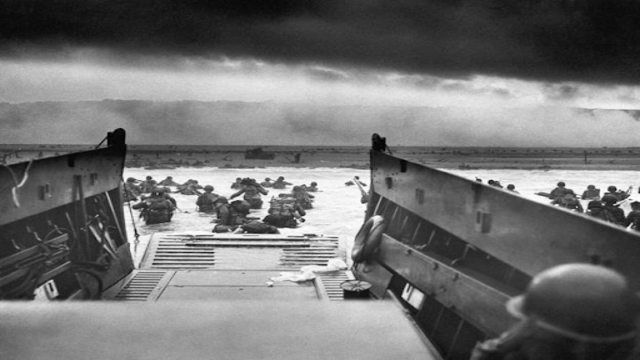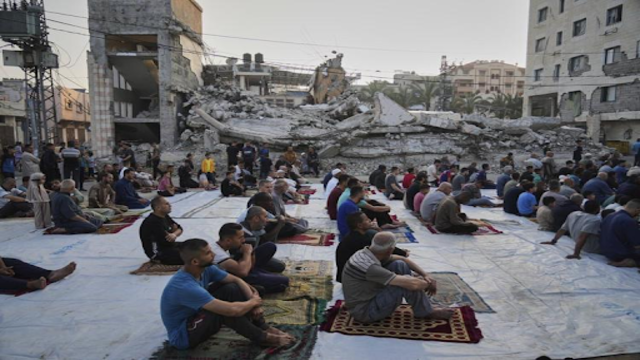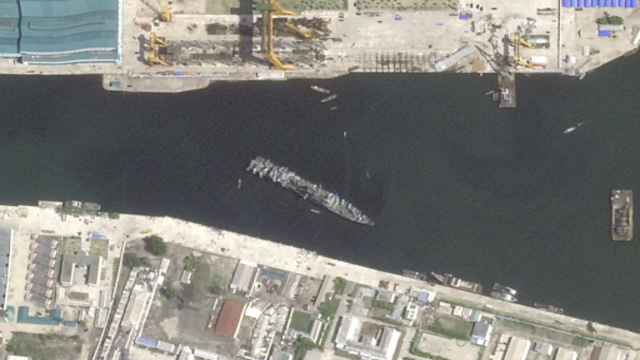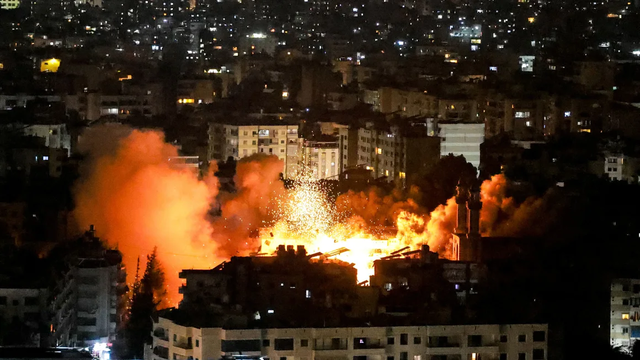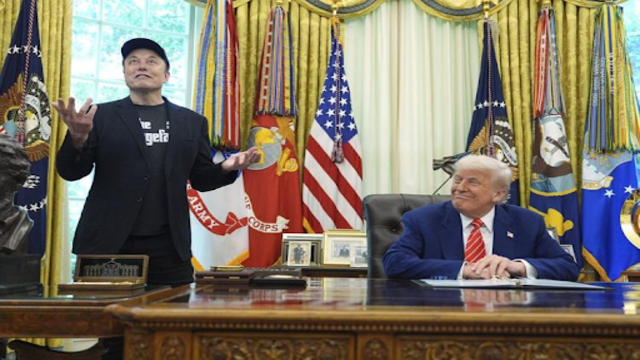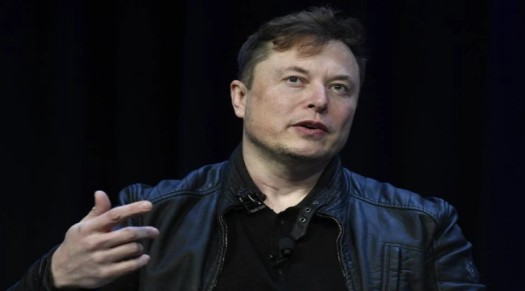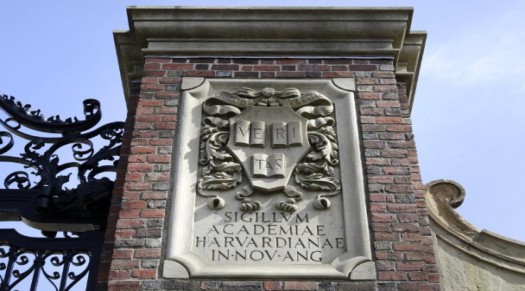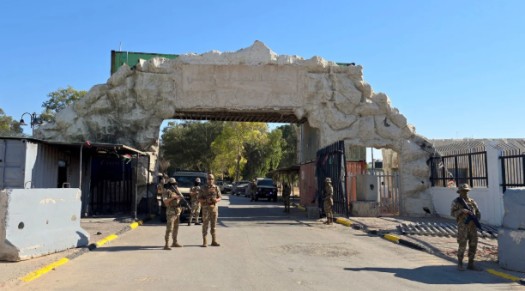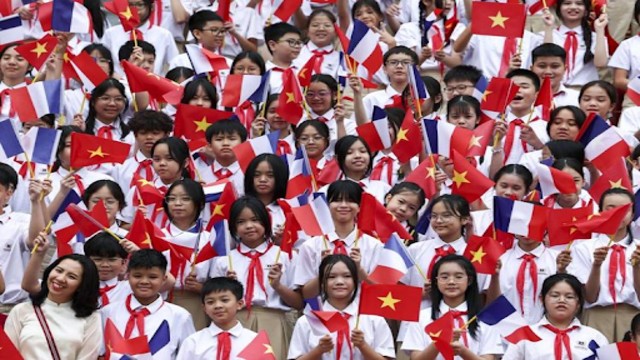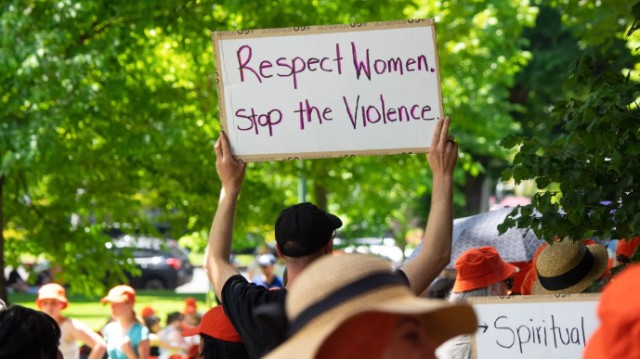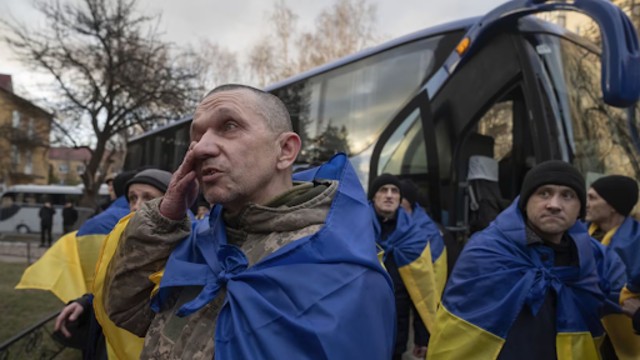
Ukrainian soldiers celebrate their release during a prisoner swap with Russia in Chernihiv, Ukraine, on Wednesday, March 19, 2025. (AP Photo)
Russia and Ukraine carried out one of the largest prisoner swaps since the war began three years ago. Both countries exchanged 175 prisoners each, bringing back soldiers and captives who had spent months or years in detention.
Ukraine’s President Volodymyr Zelenskyy said the freed Ukrainians included soldiers, officers, and border guards. He stressed that releasing all prisoners of war (POWs) and captured civilians is key to building trust and working toward peace. He once again urged for an “all-for-all” exchange, where both sides release all their captives.
The exchange happened as talks of a possible temporary ceasefire continue. However, no official agreement has been made yet.
Emotional Reunions
Following the swap, families in Ukraine’s Chernihiv region rushed to meet their loved ones. Many had been waiting for years to see them again.
Among them was 28-year-old Aliona Skuibida, who had been campaigning for her fiancé, Andrii Orel, to return. He was captured in April 2022 during the battle for Mariupol, a city that later fell to Russian forces. The couple had planned to marry after Orel returned from duty, but he was taken as a POW.
Skuibida, a member of the Marine Corps Strength Association, said that captivity is brutal and leaves many soldiers with physical and mental scars. Despite the pain, she was overjoyed to welcome Orel back. She prepared balloons and a cake, as his birthday was the day before his release.
When the buses carrying the freed soldiers arrived, emotional scenes followed. Soldiers, visibly weak and exhausted, stepped off the buses. Many smiled despite missing teeth, and some were too frail to walk properly.
Among them was 46-year-old Oleksandr Savov, who kissed the Ukrainian flag upon returning. He had been held captive for nearly three years and hadn’t heard from his daughter, Anastasiia, in all that time. She wrote him letters that went unanswered but never gave up hope.
Savov shared that he lost around 20 kilograms (44 pounds) in captivity due to poor nutrition. He described the conditions as cold and damp, with little food and no medical care. His hands were covered in a red rash from the harsh conditions.
While many families celebrated, some were still searching. People carried photos of missing relatives, asking the freed POWs if they had seen them during their imprisonment.
More Prisoners Released
Russia’s Defense Ministry announced that it freed 22 severely wounded Ukrainian prisoners as a “goodwill gesture.” Zelenskyy confirmed they were released through a separate negotiation. Originally, Russian President Vladimir Putin had promised to free 23 captives during talks with former U.S. President Donald Trump about a potential ceasefire. The reason for the reduction by one prisoner was not explained.
Zelenskyy vowed that Ukraine would not stop until all of its prisoners were returned. He promised medical and psychological care for the freed soldiers and thanked the United Arab Emirates for helping mediate the swap.
Complex Process of Exchanges
Prisoner swaps require lengthy planning. Petro Yatsenko, head of Ukraine’s POW coordination headquarters, explained that these exchanges take months to arrange. The previous exchange happened on February 5, and negotiations for this one had been ongoing since then.
Since the war began, over 4,000 Ukrainian captives, including civilians and foreigners, have been freed. The newly released soldiers had been captured while defending regions such as Mariupol, Donetsk, Luhansk, Kherson, and Zaporizhzhia.
The United Nations has reported that Ukrainian POWs often face severe mistreatment, including medical neglect and torture. There have also been scattered reports of Russian soldiers abusing prisoners during transport or at the time of capture.


